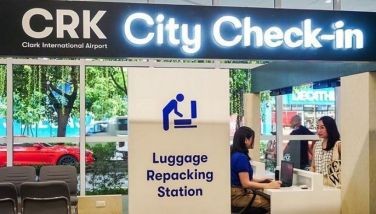Feelings for flyovers, growing pains (..continued from last Saturday)
Last September 3, I wrote a column titled “Designing change,” and it appears that the disagreement stemming from the flyover issue makes that column entry very current. USC’s College of Architecture and Fine Arts has come out with its position against the flyovers and I am happy that CAFA has decided to use its expertise and its voice to help shape the community outside USC.
But the counter-proposal seems a tad too academic. If we are to raise the discourse to a more meaningful and results-oriented level, ironically, we need to take things a notch lower and translate the theoretical approach into a language palatable to the different target demographics involved: the policy-makers, law enforcers, and most especially, ordinary citizens. Furthermore, it must be scant or, if possible, devoid of unnecessary political noise (bickering and immature potshots, stunts: i.e. name-calling, accusations, and gosh, proposing to build another flyover at the SRP just to taunt).
In my column, I said “designing change is about the tangibles and intangibles; it’s about advocating, inspiring, rousing, moving; it’s about structures and systems that are efficient, beautiful and pleasing to the senses, more importantly, those that effectively respond to needs of people. It’s about green infrastructure that is true to culture and perpetuates heritage while saving water and conserving energy. It’s about posters, murals, fashion, TVCs, movies and TV shows that provoke, change habits, ask questions, shift mindsets, save lives.”
Again, it’s all about the tangibles and intangibles. The tangibles have to go hand in hand with the intangibles—a shift in mindsets and lifestyles—so we can effectively pursue our collective aspiration of being a first-world, sustainable city and province. And no kidding, I mean it—I feel in my gut (and I’m kind of psychic so pay attention) that Cebu is the Philippines’s first taste of the first world.
Thesis, antithesis, synthesis
So all these arguments, stickers and tarps, letters to the editor, Facebook pages, these are all good. It means we’re maturing as a people, we’re getting involved. Adhering to the Hegelian dialectic of thesis, antithesis, synthesis, I believe the most spirited and passionate disagreements, when accompanied by sound reason and fact, bring to life the best solutions.
But for now, what do we do? Junk the flyovers? I don’t have the answers. I’m merely trying to discuss both sides in the hope that I may contribute to the discourse and to our shared journey to a sustainably-developed Cebu.
But allow me to share some top-of-mind suggestions:
1) Open Camp Lapu-Lapu in Lahug and fix problems on ownership of San Antonio Village in Apas, pave the roads as soon as ownership is settled or a MOA is undertaken between the city and the homeowners association (or if not Camp Lapu-Lapu, widen the roads in Apas leading to San Antonio). This becomes an alternate route to Banilad-Talamban.
2) This one is a long-shot, but what the heck: build a 2-3 KM tunnel from Barrio Luz to the end of Banilad, just like the one in SRP, except that this includes a cistern to accommodate rain and floodwater. It solves traffic and flooding! If you’re northbound, and won’t have side strips along the way, take the tunnel straight to the end of Banilad and Talamban. It might cost less than the SRP tunnel (in terms of cost per meter) since the SRP tunnel had to dig deep to save the Fort San Pedro, the Plaza Independencia, and the Malacañang Sa Sugbo, but it’ll probably come out more expensive only because it’ll be longer than the SRP tunnel. But all the development (existing and pending) in the Banilad-Talamban corridor will be well worth it!
3) Tommy Osmeña should (stop being a prick and) support the building of an MRT (from as far as Danao in the north and Carcar in the south). Doing so decongests the city; people don’t have to live in the city if they work or study here; they can go home to their respective towns every day. Less cars, less people, less traffic, less pollution. They say there aren’t enough people in Cebu to justify building one? Exactly! Long-term thinking involves laying the groundwork now before it’s too late or too difficult to address all the problems that come with growth.
4) Discipline/train and enforce the law on jeepney drivers who stop anywhere at a whim to load (and fill up empty seats) or unload. I’m convinced this irresponsible and insensitive behavior causes traffic more than anything else.
5) When widening roads, trees should be saved through the balling method. This should be integrated to the costs. Also, advocates, especially those who intend to preserve our beautiful heritage and our cityscape/skyline, must speak up against the indiscriminate pruning of trees done by both the city and VECO. Some of those tasked to do it don’t care if they kill the trees. “Bahala na’g mamatay,” said one of them while conducting their operation along Gorordo. Surely there is a better way that doesn’t endanger our trees (especially the huge acacia trees) or leave them looking like oversized stumps. Consult horticulturists.
6) For existing flyovers, or if the construction of the two new ones does push through, tap artists to design murals and what have you to make them tourist attractions and art works on their own.
What we’re all going through with this flyover conundrum isn’t easy. At any rate, all these are but growing pains. At least we’re growing. Hopefully not too fast for our own good.
* * *
Email: [email protected]
- Latest
- Trending
























